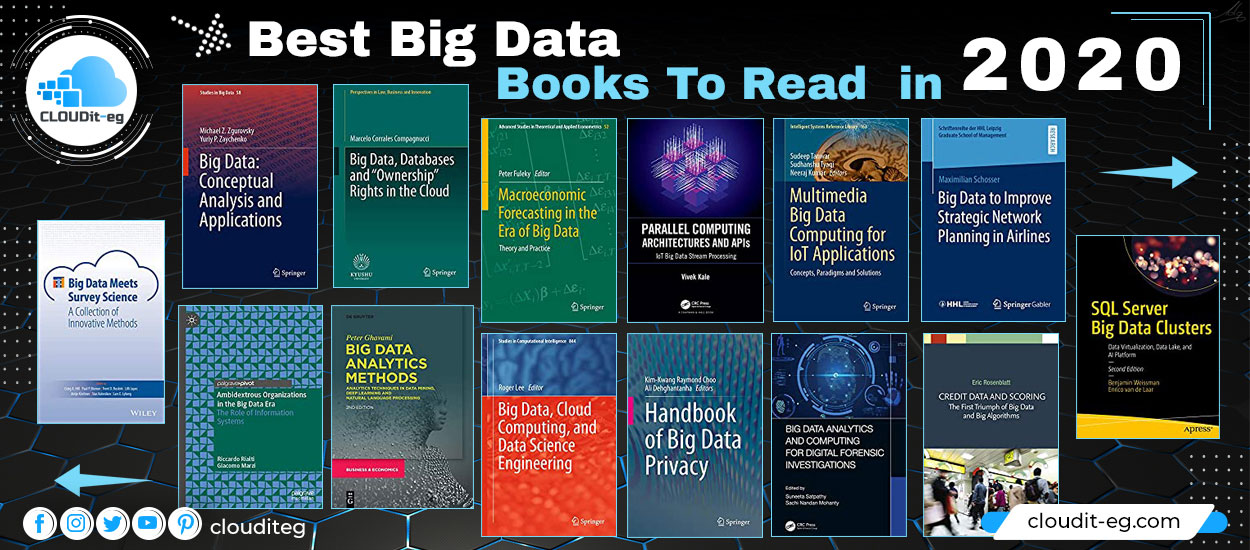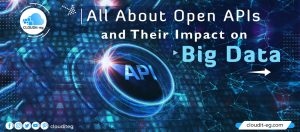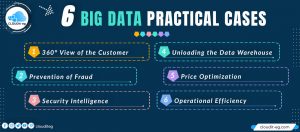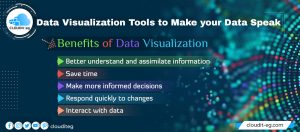Books dedicated to Big Data are on the rise in 2020. For that reason, we present a selection of the best Big Data books recently written by talented authors.
1. Big Data Meets Survey Science: A Collection of Innovative Methods
by Craig A. Hill (Editor), Paul P. Biemer (Editor), Trent D. Buskirk (Editor), Lilli Japec (Editor), Antje Kirchner (Editor), Stas Kolenikov (Editor), Lars E. Lyberg (Editor) | September 2020
This book presents a collection of snapshots from two sides of the Big Data perspective. It assembles an array of tangible tools, methods, and approaches that illustrate how Big Data sources and methods are being used in the survey and social sciences to improve official statistics and estimates for human populations.
It also provides examples of how survey data are being used to evaluate and improve the quality of insights derived from Big Data.
Big Data Meets Survey Science:
A Collection of Innovative Methods shows how survey data and Big Data are used together for the benefit of one or more sources of data, with numerous chapters providing consistent illustrations and examples of survey data enriching the evaluation of Big Data sources.
Examples of how machine learning, data mining, and other data science techniques are inserted into virtually every stage of the survey lifecycle are presented.
Topics covered include: Total Error Frameworks for Found Data; Performance and Sensitivities of Home Detection on Mobile Phone Data; Assessing Community Wellbeing Using Google Street View and Satellite Imagery; Using Surveys to Build and Assess RBS Religious Flag; and more.
- Presents groundbreaking survey methods being utilized today in the field of Big Data
- Explores how machine learning methods can be applied to the design, collection, and analysis of social science data
- Filled with examples and illustrations that show how survey data benefits Big Data evaluation
- Covers methods and applications used in combining Big Data with survey statistics
- Examines regulations as well as ethical and privacy issues
Big Data Meets Survey Science: A Collection of Innovative Methods is an excellent book for both the survey and social science communities as they learn to capitalize on this new revolution. It will also appeal to the broader data and computer science communities looking for new areas of application for emerging methods and data sources.
2. Big Data: Conceptual Analysis and Applications
by Michael Z. Zgurovsky, Yuriy P. Zaychenko | © 2020
The book is devoted to the analysis of big data in order to extract from these data hidden patterns necessary for making decisions about the rational behavior of complex systems with the different nature that generate this data.
To solve these problems, a group of new methods and tools is used, based on the self-organization of computational processes, the use of crisp and fuzzy cluster analysis methods, hybrid neural-fuzzy networks, and others.
The book solves various practical problems. In particular, for the tasks of 3D image recognition and automatic speech recognition large-scale neural networks with applications for Deep Learning systems were used.
The application of hybrid neuro-fuzzy networks for analyzing stock markets was presented. The analysis of big historical, economic, and physical data revealed the hidden Fibonacci pattern about the course of systemic world conflicts and their connection with the Kondratieff big economic cycles and the Schwabe–Wolf solar activity cycles. The book is useful for system analysts and practitioners working with complex systems in various spheres of human activity.
3. Big Data, Databases And “Ownership” Rights In The Cloud
by Marcelo Corrales Compagnucci | © 2020
Two of the most important developments of this new century are the emergence of cloud computing and big data. However, the uncertainties surrounding the failure of cloud service providers to clearly assert ownership rights over data and databases during cloud computing transactions and big data services have been perceived as imposing legal risks and transaction costs.
This lack of clear ownership rights is also seen as slowing down the capacity of the Internet market to thrive. Click-through agreements drafted on a take-it-or-leave-it basis govern the current state of the art, and they do not allow much room for negotiation.
The novel contribution of this book proffers a new contractual model advocating the extension of the negotiation capabilities of cloud customers, thus enabling an automated and machine-readable framework, orchestrated by a cloud broker.
Cloud computing and big data are constantly evolving and transforming into new paradigms where cloud brokers are predicted to play a vital role as innovation intermediaries adding extra value to the entire life cycle.
This evolution will alleviate the legal uncertainties in society by means of embedding legal requirements in the user interface and related computer systems or its code.
This book situates the theories of law, economics, behavioral law, economics in the context of cloud computing. it takes database rights and ownership rights of data as prime examples to represent the problem of collecting, outsourcing, and sharing data and databases on a global scale.
It does this by highlighting the legal constraints concerning ownership rights of data and databases and proposes finding a solution outside the boundaries and limitations of the law. By allowing cloud brokers to establish themselves in the market as entities coordinating and actively engaging in the negotiation of service-level agreements (SLAs), individual customers, as well as small and medium-sized enterprises, could efficiently and effortlessly choose a cloud provider that best suits their needs.
This approach, which the author calls “plan-like architectures,” endeavors to create a more trustworthy cloud computing environment and to yield radical new results for the development of cloud computing and big data markets.
4. Macroeconomic Forecasting In The Era Of Big Data: Theory And Practice
by Peter Fuleky | © 2020

This book surveys big data tools used in macroeconomic forecasting and addresses related econometric issues, including how to:
- Capture dynamic relationships among variables;
- Select parsimonious models;
- Deal with model uncertainty, instability, non-stationarity, and mixed frequency data;
- Evaluate forecasts, among others.
Each chapter is self-contained with references, and provides solid background information, while also reviewing the latest advances in the field. Accordingly, the book offers a valuable resource for researchers, professional forecasters, and students of quantitative economics.
5. Parallel Computing Architectures and APIs: IoT Big Data Stream Processing
by Vivek Kale | © 2020
Parallel Computing Architectures and APIs: IoT Big Data Stream Processing commences from the point high-performance uniprocessors were becoming increasingly complex, expensive, and power-hungry.
A basic trade-off exists between the use of one or a small number of such complex processors, at one extreme, and a moderate to a very large number of simpler processors, at the other. When combined with a high-bandwidth, interprocessor communication facility leads to a significant simplification of the design process.
However, two major roadblocks prevent the widespread adoption of such moderately to massively parallel architectures: the interprocessor communication bottleneck, and the difficulty and high cost of algorithm/software development.
One of the most important reasons for studying parallel computing architectures is to learn how to extract the best performance from parallel systems. Specifically, you must understand its architectures so that you will be able to exploit those architectures during programming via the standardized APIs.
This book would be useful for analysts, designers, and developers of high-throughput computing systems essential for big data stream processing emanating from IoT-driven cyber-physical systems (CPS).
6. Multimedia Big Data Computing for IoT Applications: Concepts, Paradigms and Solutions
by Sudeep Tanwar, Sudhanshu Tyagi, Neeraj Kumar | © 2020
This book considers all aspects of managing the complexity of Multimedia Big Data Computing (MMBD) for IoT applications and develops a comprehensive taxonomy. It also discusses a process model that addresses a number of research challenges associated with MMBD, such as scalability, accessibility, reliability, heterogeneity, and Quality of Service (QoS) requirements, presenting case studies to demonstrate its application.
Further, the book examines the layered architecture of MMBD computing and compares the life cycle of both big data and MMBD. Written by leading experts, it also includes numerous solved examples, technical descriptions, scenarios, procedures, and algorithms.
7. Big Data to Improve Strategic Network Planning in Airlines
by Maximilian Schosser | © 2020
Big data has become an important success driver in airline network planning. Maximilian Schosser explores the status quo of network planning across a case study group consisting of nine airlines representing different business models.
The author describes 23 big data opportunities for airline network planning and evaluates them based on their specific value contribution for airline network planning.
Subsequently, he develops a financial evaluation methodology for big data opportunities based on key performance indicators for airline network planning departments.
8. Ambidextrous Organizations in the Big Data EraBig Data to Improve Strategic Network Planning in Airlines: The Role of Information Systems
by Riccardo Rialti, Giacomo Marzi | © 2020
Addressing the effect of big data analytics-capable information systems on organizational ambidexterity, this book investigates how these systems can be used to enhance organizational agility and flexibility, generally considered to be two key determinants of organizational ambidexterity.
With a focus on the opportunities for businesses rather than the burden that big data can represent, the authors highlight the impact of big data on ambidextrous organizations and how current organizational structures can be modified in order to improve big data analytics and implement big data-capable information systems.
9. Big Data Analytics Methods: Analytics Techniques in Data Mining, Deep Learning and Natural Language Processing
by Peter Ghavami | © 2020
Big Data Analytics Methods unveils secrets to advanced analytics techniques ranging from machine learning, random forest classifiers, predictive modeling, cluster analysis, natural language processing (NLP), Kalman filtering, and ensembles of models for optimal accuracy of analysis and prediction.
More than 100 analytics techniques and methods provide big data professionals, business intelligence professionals, and citizen data scientists insight on how to overcome challenges and avoid common pitfalls and traps in data analytics.
The book offers solutions and tips on handling missing data, noisy and dirty data, error reduction, and boosting signals to reduce noise. It discusses data visualization, prediction, optimization, artificial intelligence, regression analysis, the Cox hazard model, and many analytics using case examples with applications in the healthcare, transportation, retail, telecommunication, consulting manufacturing, energy, and financial services industries.
This book’s state-of-the-art treatment of advanced data analytics methods and important best practices will help readers succeed in data analytics.
10. Big Data, Cloud Computing, and Data Science Engineering
by Roger Lee | © 2020
This edited book presents the scientific outcomes of the 4th IEEE/ACIS International Conference on Big Data, Cloud Computing, Data Science & Engineering (BCD 2019) which was held on May 29–31, 2019 in Honolulu, Hawaii.
The aim of the conference was to bring together researchers and scientists, businessmen and entrepreneurs, teachers, engineers, computer users, and students to discuss the numerous fields of computer science and to share their experiences and exchange new ideas and information in a meaningful way.
Presenting 15 of the conference’s most promising papers, the book discusses all aspects (theory, applications, and tools) of computer and information science, the practical challenges encountered along the way, and the solutions adopted to solve them.
11. Big Data to Improve Strategic Network Planning in Airlines
by Kim-Kwang Raymond Choo, Ali Dehghantanha | Mar 18, 2020
This handbook provides comprehensive knowledge and includes an overview of the current state-of-the-art of Big Data Privacy, with chapters written by international world leaders from academia and industry working in this field. The first part of this book offers a review of security challenges in critical infrastructure and offers methods that utilize acritical intelligence (AI) techniques to overcome those issues.
It then focuses on big data security and privacy issues in relation to developments in Industry 4.0. Internet of Things (IoT) devices are becoming a major source of security and privacy concerns in big data platforms. Multiple solutions that leverage machine learning for addressing security and privacy issues in IoT environments are also discussed in this handbook.
The second part of this handbook is focused on privacy and security issues in different layers of big data systems. It discusses methods for evaluating the security and privacy of big data systems on the network, application, and physical layers.
This handbook elaborates on existing methods to use data analytic and AI techniques at different layers of big data platforms to identify privacy and security attacks. The final part of this handbook is focused on analyzing cyber threats applicable to big data environments. It offers an in-depth review of attacks applicable to big data platforms in smart grids, smart farming,
FinTech, and health sectors. Multiple solutions are presented to detect, prevent, and analyze cyber-attacks and assess the impact of malicious payloads on those environments. This handbook provides information for security and privacy experts in most areas of big data including; FinTech, Industry 4.0, Internet of Things, Smart Grids, Smart Farming, and more.
Experts working in big data, privacy, security, forensics, malware analysis, machine learning, and data analysts will find this handbook useful as a reference. Researchers and advanced-level computer science students focused on computer systems, the Internet of Things, Smart Grid, Smart Farming, Industry 4.0, and network analysts will also find this handbook useful as a reference.
12. Big Data Analytics and Computing for Digital Forensic Investigations
by Suneeta Satpathy, Sachi Nandan Mohanty | Mar 17, 2020
Digital forensics has recently gained a notable development and become the most demanding area in today’s information security requirement. This book investigates the areas of digital forensics, digital investigation, and data analysis procedures as they apply to computer fraud and cybercrime, with the main objective of describing a variety of digital crimes and retrieving potential digital evidence.
Big Data Analytics and Computing for Digital Forensic Investigations give a contemporary view of the problems of information security. It presents the idea that protective mechanisms and software must be integrated along with forensic capabilities into existing forensic software using big data computing tools and techniques.
Features
- Describes trends of digital forensics served for big data and the challenges of evidence acquisition
- Enables digital forensic investigators and law enforcement agencies to enhance their digital investigation capabilities with the application of data science analytics, algorithms, and fusion technique
This book is focused on helping professionals as well as researchers to get ready with next-generation security systems to mount the rising challenges of computer fraud and cybercrimes as well as with digital forensic investigations.
13. Credit Data and Scoring: The First Triumph of Big Data and Big Algorithms
by Eric Rosenblatt | Jan 7, 2020
Credit Data and Scoring: The First Triumph of Big Data and Big Algorithms illuminates the often-hidden practice of predicting an individual’s economic responsibility. Written by a leading practitioner, it examines the international implications of US leadership in credit scoring and what other countries have learned from it in building their own systems.
Through its comprehensive contemporary perspective, the book also explores how algorithms and big data are driving the future of credit scoring. By revealing a new big picture and data comparisons, it delivers useful insights into legal, regulatory, and data manipulation.
- Provides insights into credit scoring goals and methods
- Examines U.S leadership in developing credit data and algorithms and how other countries depart from it
- Analyzes the growing influence of algorithms in data scoring
14. SQL Server Big Data Clusters: Data Virtualization, Data Lake, and AI Platform
by Benjamin Weissman, Enrico van de Laar | May 23, 2020
Use this guide to one of SQL Server 2019’s most impactful features―Big Data Clusters. You will learn about data virtualization and data lakes for this complete artificial intelligence (AI) and machine learning (ML) platform within the SQL Server database engine. You will know how to use Big Data Clusters to combine large volumes of streaming data for analysis along with data stored in a traditional database. For example, you can stream large volumes of data from Apache Spark in real-time while executing Transact-SQL queries to bring in relevant additional data from your corporate, SQL Server database.
Filled with clear examples and use cases, this book provides everything necessary to get started working with Big Data Clusters in SQL Server 2019. You will learn about the architectural foundations that are made up of Kubernetes, Spark, HDFS, and SQL Server on Linux. You then are shown how to configure and deploy Big Data Clusters in on-premises environments or in the cloud. Next, you are taught about querying. You will learn to write queries in Transact-SQL―taking advantage of skills you have honed for years―and with those queries, you will be able to examine and analyze data from a wide variety of sources such as Apache Spark.
Through the theoretical foundation provided in this book and easy-to-follow example scripts and notebooks, you will be ready to use and unveil the full potential of SQL Server 2019: combining different types of data spread across widely disparate sources into a single view that is useful for business intelligence and machine learning analysis.
You will:
- Install, manage, and troubleshoot Big Data Clusters in cloud or on-premise environments
- Analyze large volumes of data directly from SQL Server and/or Apache Spark
- Manage data stored in HDFS from SQL Server as if it were relational data
- Implement advanced analytics solutions through machine learning and AI
- Expose different data sources as a single logical source using data virtualization

















